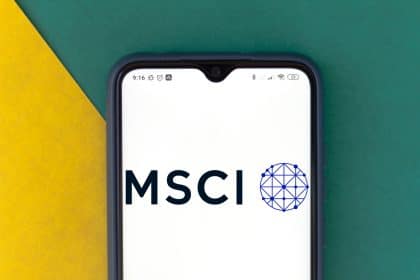This guide analyzes the Best Wallet Token price forecast from 2025 to 2030. We break down expert predictions and the key factors t...
What Is MSCI Emerging Markets Index?
Last Updatedby Beatrice Mastropietro · 4 mins read

The MSCI Emerging Markets Index is an index that provides exposure to stocks of emerging markets countries. The benchmark includes over 1,300 stocks from 23 different countries. With this guide, you will learn about how it works and its advantages for investors.
A weighted market capitalization index of 27 emerging nations is provided in the MSCI Emerging Markets index. It covers several regions, including North America and the Asia-Pacific. Mainly large and medium-sized firms may be found in this index. The index also offers a significant level of flexibility for investors, which allows them to hold over 1,300 stocks at any moment. The index is also badly tracked.
History of MSCI Emerging Markets Index
The MSCI Emerging Markets Index is a popular measure in investment performance tracking in developing and emerging markets. The index measures market appreciation and dividends, which are both included in its calculations. MSCI was created by Standard & Poor’s and Dow Jones Index in 1975 as an international benchmark of equity securities worldwide that incorporates data from exchanges across the world weighted against market capitalization. For more than four decades, MSCI has been providing market capitalization-weighted index data with billions of dollars invested around the globe daily. With over 2,000 employees across 155 indices that cover territories worldwide, MSCI employs 29 offices to service markets in every continent.
Understanding the MSCI Emerging Markets Index
The MSCI Emerging Markets Index measures the progress of large and medium-sized firms in 27 countries with emerging markets. The index reflects a more transitional economic system with rapid expansions, active engagement with global trade, and some parts of economies that benefit global markets.
The benchmark emerging-market index has gone from 10 to over 1,300 stocks since its founding in 1988. It is a measure of the performance of developing countries’ stock markets.
MSCI offers a variety of worldwide inventory tracking indices. For example, the MSCI World Index covers companies from both developed and developing markets, and the MSCI All Country World index monitors a vast range of firms.
Investing in the MSCI Emerging Markets Index
Investors who want a more well-rounded portfolio would be better served by an investment in emerging market indices or stocks listed on them.
When looking for an emerging market index fund, you should be aware of many other options. A large amount of capital in the iShares offering likely makes it the best choice for most investors.
Worldwide, MSCI offers many indicators for tracking inventories. For example, both developed and developing markets and the MSCI World Index are covered by MSCI, which monitors many companies.
Several more ETFs and mutual funds in the developing markets are available to monitor indicators such as the FTSI Emerging Markets Index. They do not use indexing. Instead, they use their stock selecting technique to choose assets for inclusion in portfolios.
Fear of political risk and market swings may make emerging markets appear risky for investors willing to invest in them. An investment in developing markets is expected to provide erratic returns as well as potential losses. The potential benefits are significant, but so are the potential losses due to high volatility.
When investing in MSCI, investors should consider a list of pros and cons behind the index. The advantages include:
- Investing in a fund that mimics the MSCI Emerging Markets Index can expose investors to global economic growth;
- If you want to invest internationally, you will find it informative to monitor the performance of this index;
- With over 1,300 stocks from 27 different countries, it provides a broad view of the stock market’s performance around the world.
However, all developing markets are low-risk investments to varying degrees, but this index offers a moderate approach. When it comes to indexes, the MSCI World Index performed better with less risk.
MSCI Components
As of March 31, 2021, as many as 1,392 companies constituted the MSCI Emerging Markets Index. The best five of them include:
- Taiwan Semiconductor Manufacturing Company, Limited (Taiwan),
- Tencent Holdings Limited (China),
- Alibaba Group Holding Limited (China),
- Samsung Electronics (South Korea),
- Meituan B (China).
The MSCI Emerging Markets Index is a large- and medium-cap index of the 27 largest emerging markets (EM) countries. It covers about 85% of each EM country’s free float-adjusted market capitalization.
Emerging Markets are economies that have chugged along at a decent clip over the last few years but haven’t knocked on the door to global prosperity yet. They typically lack a strict rule of law or property rights, in addition to other more practical shortcomings like advanced financial systems. EM countries include Argentina, Brazil, Chile, China, Colombia, Czech Republic, Egypt, Greece, Hungary, India, Indonesia, Korea, Kuwait, Malaysia, Mexico, Pakistan, Peru, Philippines, Poland, Qatar, Russia, Saudi Arabia, South Africa, Taiwan, Thailand, Turkey, and United Arab Emirates.
Conclusion
Investing in the MSCI Emerging Markets Index can be done in a variety of ways. Investors might choose to invest in an MSCI equity index or a fund that utilizes it as a benchmark. Risk-averse investors should stay with one of these techniques, while risk-takers may be able to benefit from both.
This guide explains how to buy MemeClip, a new blockchain project that blends meme elements with P2E gaming. Learn how to join the...
This guide explores the best cheap stocks to invest in, according to analysts. We reveal undervalued equities that could outperfor...